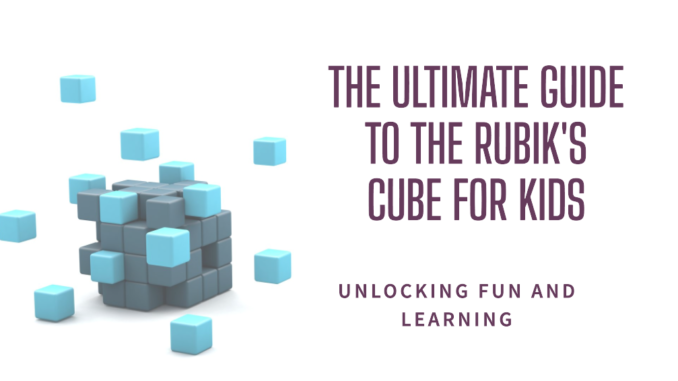
If there is a toy known in all the countries of the world, beyond cultures and traditions, that is the Rubik’s cube. But, what is special about that colored hexahedron being the best-selling toy of all time? Stay with us in this article, Aark Learnings will tell you why this creation has become an iconic toy that has survived all fashions.
It was the year 1974 when an architecture professor named Erno Rubik developed a 3D puzzle with the intention of explaining to his students the three-dimensionality of objects. Without realizing it, Erno had just carved a place for himself in history and in the hearts of many fans who, years later, still celebrate his successful creation.
It’s hard to find someone who hasn’t had one of these in their hands, although when it comes to how many of them know how to solve it, the statistics drop drastically; it is estimated that only 5% of people who try it end up completing it. That’s because solving the Rubik’s cube without any help or instruction is not an easy task. Mathematics confirms this since there are more than 43 trillion possible combinations for the cube.
Why is it beneficial for kids to play with the Rubik’s cube?
Children don’t just play Rubik’s Cube as a pastime. Playing with it entails applying a system for solving problems that teach kids to think critically about all the different scenarios that might emerge unexpectedly. As a result, it can be said that the cube engages in fun mental exercise.
The advantages of this puzzle for kids’ mental health are numerous. The benefits of playing Cube are actually comparable to those of playing chess.
Among the advantages offered by playing with this puzzle, we find:
- Improves visual-spatial capacity: Solving the cube implies being able to detect similarities and differences between the parts of a whole, favouring its understanding.
- Exercises attention and concentration: It is a basic element to be able to play with the puzzle. Attention is needed to focus at first and then to be able to maintain it for a longer time.
- Patience: As the cube is played, perseverance and the ability to wait can be exercised.
- Develops memory: It is necessary to be concentrated and know the movements that have been taking place to get to the point where you are and in case of an error, to be able to go back and take another route.
- Promotes creativity: There is a need to go through different paths to solve the task and for this, the child has the need to use his own abilities and improve himself.
The Rubik’s Cube in the classroom is an element that enhances spatial and logical-mathematical intelligence.
Some Fascinating Facts About the 3×3 Cube
- The world speed record has long since been installed in under 5 seconds. Currently, it is held by Yusheng Du, who has been able to solve it in 3.47 seconds (although who knows if this mark can be pulverized in the next championship).
- That resounding, whatever its state and taking into account the dizzying number of 43,252,003,274,489,856,000 possible combinations, you can solve it in a maximum of 20 moves! This data is known in the Cubero world as the number of God.
- Time magazine published a list of the 10 best-selling items of all time in 2014 and yes, there was our three-dimensional puzzle. By then, more than 350 million units had been sold, a number that must have increased considerably in the last 5 years considering the growing fervour it has experienced across the planet.
- The fastest way to solve the cube is called the Fridrich method. Its creator, Jessica Fridrich, established different patterns of organized movements that would significantly reduce the number of movements needed to solve it. This method is the key of the current speed cube and it is logical to think that to execute it you have to memorize a large number of algorithms.
Rubik’s cube in the classroom
After more than four decades since its creation, the passion for this puzzle is only growing.
Schools organize workshops and extracurricular activities with it, valuing not only its playful aspect but also betting on the important educational component that it can offer us. Among the many benefits that the cube can bring to children we can highlight:
Improve hand-eye coordination and visuospatial ability
From the moment the child is able to analyze the state or position of a piece of the cube and how to solve it, they will be able to find similarities and differences in other positions and draw strategies based on that. This is typical of puzzles in general, but in the case of the 3×3 cube, it also helps to understand the three-dimensionality of objects.
Activate memory
In order to solve the cube, you will need some information that your brain will have previously stored. You will need to remember the resolution strategies used in certain difficulties, the position and colours of some pieces and even some other sequential movement algorithms that will help you complete it.
Encourage patience and work against frustration
Who said that solving our colour hexahedron is going to be easy? In this sense, it is essential to establish staggered objectives that are proportionate to the age and ability of each student. Resolving a first layer may already be a merit worthy of celebration. However, it is also important that the student understands that a wrong movement can undo all that we have progressed, and that is when we have to keep trying and never throw in the towel.
Exercise attention and concentration
To solve any puzzle it is essential to work on the same activity for a relatively long period of time, which will help us improve the child’s ability to concentrate. For obvious reasons, it’s easier to stay focused when the task at hand is fun, so games and puzzles are very powerful tools for working on attention.
Improve self-esteem and the ability to work toward a goal
This is the part that we like the most of the many things that we can work with the Rubik’s cube in the classroom. Observing and structuring the information, developing strategies and making them work, working hard to solve a problem… aren’t these reasons more than enough to feel very proud of the work done?
The entire process behind teaching how to solve the Rubik’s cube is a wonderful opportunity to work on many educational aspects that can be essential for the child’s growth.
What is beyond 3×3?
Any good cubero that claims to be usually has a wide collection that includes at least some of the most representative pieces such as:
Pyraminx:
The pyraminx is a really striking cube that everyone falls in love with for its beautiful pyramidal shape (it should be understood that in the cube world, these puzzles are called “cubes” despite not having a cubic shape). Its difficulty is rather low (compared to other cubes) because the number of possible combinations is less than that of a 3×3 cube. The Pyraminx is highly recommended for the little ones to have their first contact with the world of cubes since it is very intuitive and with repetitive movements.
Skewb
The skewb is a cube that is disconcerting when you have your first contact with it. Although it is cubic, its movements have nothing to do with 3×3. In fact, in terms of its movements, it is more like the pyraminx since it revolves around its vertices. The skewb is not complicated to solve and for this, you can help yourself with a fairly simple algorithm. That makes it a very good option to introduce children to this exciting hobby.
Mirrored cube
The classic 3×3 has endless modifications and the mirror cube is one of the most popular. Can you imagine solving a cube in which there are no stickers of different colours to help you and it is also deformed by the different sizes of its pieces? Well, that’s the mirror, a challenging twist for those who already know how to solve 3×3 and want to go one step further.
Currently, many local associations ensure the good health of this iconic toy by organizing initiation workshops and championships. These events are a fantastic meeting point where fans can share their knowledge, their achievements, network with other people who share their passion or learn about new models coming to the market. In this way, an interest and devotion to the cube is being created which means that, more than forty years later, it is living its best moment.

Leave a Reply